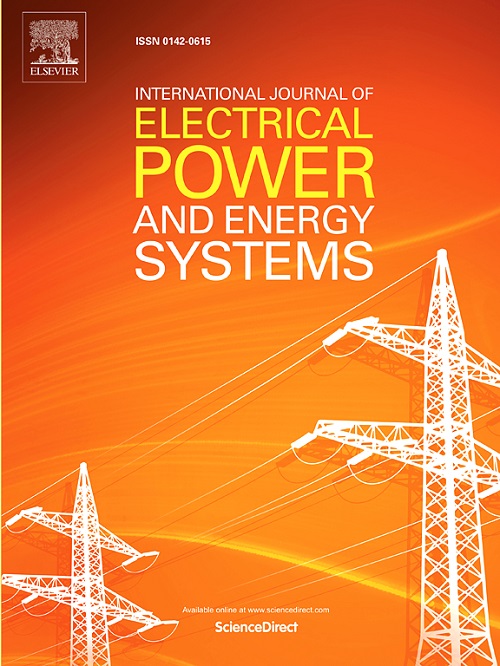A time-domain fault location technique for HVDC transmission lines based on numerical solution of differential equation
IF 5
2区 工程技术
Q1 ENGINEERING, ELECTRICAL & ELECTRONIC
International Journal of Electrical Power & Energy Systems
Pub Date : 2025-07-05
DOI:10.1016/j.ijepes.2025.110867
引用次数: 0
Abstract
This paper introduces an accurate fault location method for high-voltage direct current (HVDC) transmission lines based on time-domain data. The proposed method employs the distributed parameter model of transmission lines and applies the Variational Iteration Method (VIM) from the field of mathematics to solve the partial differential form of the transmission line equations. By deriving the expressions for current and voltage following a fault and substituting the instantaneous values of current and voltage at both ends at the fault moment, a distribution matrix of current and voltage along the line over time can be obtained. The fault location is identified by comparing the similarity of voltage waveforms at the same position on the line, derived separately from data at the beginning and end of the line after the fault. The point of highest similarity indicates the fault location. The accuracy of the result is further refined using the bisection method. Simulation results demonstrate that this method is unaffected by fault location, fault type, or the magnitude of transition resistance at the fault moment, and it exhibits high accuracy and stability.
基于微分方程数值解的高压直流输电线路时域故障定位技术
介绍了一种基于时域数据的高压直流输电线路故障精确定位方法。该方法采用输电线路的分布参数模型,应用数学领域的变分迭代法求解输电线路方程的偏微分形式。通过推导故障后的电流和电压表达式,代入故障时刻两端电流和电压的瞬时值,可以得到电流和电压沿线路随时间的分布矩阵。通过比较线路上同一位置的电压波形的相似度来确定故障位置,这些波形分别从故障发生后线路的开始和结束的数据中导出。相似度最高的点表示故障位置。采用等分法进一步提高了结果的精度。仿真结果表明,该方法不受故障位置、故障类型和故障时刻过渡电阻大小的影响,具有较高的准确性和稳定性。
本文章由计算机程序翻译,如有差异,请以英文原文为准。
求助全文
约1分钟内获得全文
求助全文
来源期刊
CiteScore
12.10
自引率
17.30%
发文量
1022
审稿时长
51 days
期刊介绍:
The journal covers theoretical developments in electrical power and energy systems and their applications. The coverage embraces: generation and network planning; reliability; long and short term operation; expert systems; neural networks; object oriented systems; system control centres; database and information systems; stock and parameter estimation; system security and adequacy; network theory, modelling and computation; small and large system dynamics; dynamic model identification; on-line control including load and switching control; protection; distribution systems; energy economics; impact of non-conventional systems; and man-machine interfaces.
As well as original research papers, the journal publishes short contributions, book reviews and conference reports. All papers are peer-reviewed by at least two referees.

 求助内容:
求助内容: 应助结果提醒方式:
应助结果提醒方式:


